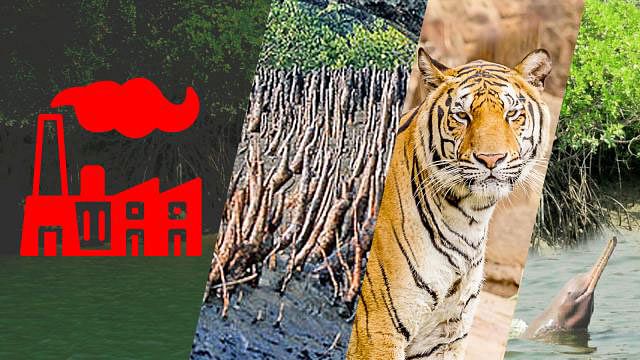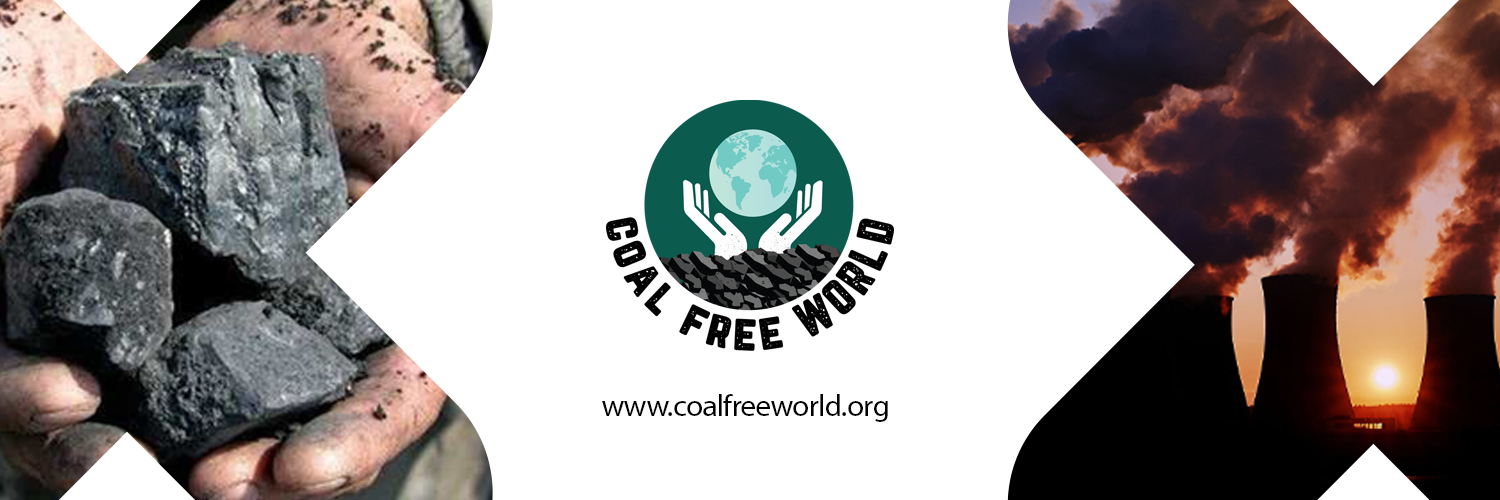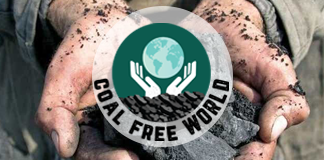Open letter: Protect Sundarbans from coal-fired power plants
Dear Presidents, Prime Ministers, Ministers of State and Ministers of Bangladesh and India,
We are writing to express our deep concern regarding the proposed Rampal and Orion coal power-plant projects, whose construction is being planned only 12-14 km away from the Sundarbans. As you know, the Sundarbans is the largest remaining mangrove forest in the world, with a total area of 10,000 km2. It is a UNESCO World Heritage Site, extremely biodiversity-rich, comprising of terrestrial, aquatic and marine habitats, and is of critical importance for globally endangered species. Given the short distance separating the planned power plants and the Sundarbans, the coal power plants are directly endangering hundreds of thousands of local people living in the area, as well as the biodiversity of the mangrove forest. UNESCO’s World Heritage Centre and the IUCN have already identified the four key main impacts related to the power plant’s construction: Pollution from coal ash by air, pollution from wastewater and waste ash, increased shipping and dredging, and the cumulative impact of industrial and related infrastructure. As you are aware, they recommend the immediate cancellation of the Rampal power plant project.1
These are legitimate fears: during the last three years, three coal-carrying vessels sank in the Sundarbans. In December 2014, an oil tanker capsized, and the spilled oil spread to far corners of the forest with the flow of the Shela River. Plants and wildlife were seriously affected.2 There is no doubt that the proposed Rampal and Orion power plants will have serious and irreversible impact on the ecology of the Sundarbans. Even modern technology cannot ensure that their pollution will be kept at the minimum acceptable level.
The planned coal power plants do not only threaten the unique biodiversity and ecosystem of the Sundarbans, but also the health and livelihoods of millions of local people. The Sundarbans is a critical source of traditional subsistence foods, medicines and building materials for local communities; as well as commercially valuable products of biodiversity, such as honey and fish; and ecotourism, that support many local livelihoods.3 Local people rely on agriculture and fishing for their survival and meager income. The proposed power plants will affect both the quality of soil and water, consequently diminishing the livelihood of the locals, as well as the area of arable land available. They will also gravely impact people’s health, with the wind patterns carrying ash to the forest and to inhabited areas, meaning acid rain, breathing difficulties, health issues for mothers and babies, etc. As a result, many people would be compelled to migrate and give up their homes. In fact, many people have already been displaced as a result of land being purchased for the project. Women are particularly at risk, as displacement increases the threat of gender violence, including being forced into trafficking and prostitution. The harmful environmental impacts of the plant’s operation in the area will also increase millions of coastal people’s vulnerability to natural disasters, since the Sundarbans acts as a barrier against frequent cyclones, storms and other natural disasters4 (which will increase as more greenhouse gases get released to the atmosphere). It also serves as a major repository (sink) of atmospheric carbon, in its undisturbed natural state, making it a critical contributor to stabilising the global climate.5
Our fears relating to the negative impacts of the Rampal and Orion power plants are further reinforced by the invitation to other national and international business groups with vested interests to obtain land in the area adjacent to the forest in order to set up commercial projects in and around the Sundarbans.
1 IUCN & World Heritage Centre (2016). Report on the mission to the Sundarbans world heritage site, Bangladesh, from 22 to 28 March 2016; http://whc.unesco.org/en/documents/148097 2 Daily Star (13-01-2017). Coal vessel sinks near Sundarbans, all rescued; http://www.thedailystar.net/country/coal-vessel-reportedly-sinks-near-sundarbans-1344823 3 Basit, M. A. (1995). Non-wood forest products from the mangrove forests of Bangladesh. FAO; http://www.fao.org/docrep/x5336e/x5336e0o.htm 4 IUCN & World Heritage Centre (2016). Report on the mission to the Sundarbans world heritage site, Bangladesh, from 22 to 28 March 2016; http://whc.unesco.org/en/documents/148097 5 UNEP (2010). Mangroves Report Reveals Threats & Opportunities to Global Economy & the Planet; http://www.unep.org/Documents.Multilingual/Default.asp?DocumentID=630&ArticleID=6645&l=en&t=long
If built, the Rampal power plant will be dependent on imported coal, including from Indonesia, Australia and South Africa.6 Coal from India has been negotiated as well.7 Coal mining in itself is a very destructive activity which causes habitat destruction, a high level of pollution, work-related social and health problems and contributes significantly to climate change.8 The imported coal will need to be shipped approximately 35 kilometers along the Pasur river, which flows through the Sundarbans, and will therefore need to be dredged.9
The burning of fossil fuels, such as coal, increases emissions of carbon dioxide which exacerbates global warming and climate change. Temperatures are already increasing world-wide; 2016 is the warmest year on record, surpassing 2015 and other hot years.10,11 Due to Bangladesh’s low-lying location, it is already one of the most climate vulnerable nations in the world.12 Climate change impacts such as rising sea levels, and more extreme events such as floods, droughts, heat waves, storms and wildfires, will be felt more acutely worldwide and have dire consequences for Bangladesh.
The Government of India established the National Adaptation Fund on Climate Change (NAFCC) in 2015 to meet the cost of adaptation to climate change.13 Rather than build a climate-damaging coal-fired power plant, India should help Bangladesh developing renewable sources of energy, both respecting the environment and benefiting all inhabitants of the Sundarbans. The freshwater flow into the Sundarbans has already been substantially reduced due to both legal and illegal human activities, resulting in increases in siltation and salinity, which threaten to upset the overall balance and functioning of the ecosystem and its species.9
Investing in fossil fuel-fired power plants, regardless of its location in the world, is consequently an incredibly shortsighted, retrogressive and seriously detrimental energy strategy, which will have devastating consequences for future generations. China has announced plans to cancel more than 100 coal plants currently in development, what would amount to 120 GW of coal-fired electricity capacity if the plants were completed.14 This proves that it is never too late to reevaluate already made decisions and make changes for the better. Further, rural communities in Bangladesh benefit very little from such large-scale energy projects, particularly marginalised women, who are mostly off the grid and have no access to the energy produced. Instead, polluting industrial corporations will be the ones to benefit most. Meanwhile, the Bangladesh Government has set an ambitious target to have an additional 3.1 GW renewable energy capacity installed by 202115, which can bring energy democracy and advance gender equality. The World Bank has called Bangladesh “a role model for solar power”.16 India, the fourth biggest emitter of greenhouse gases in the world17, has also set ambitious targets, aiming to have 100 GW solar power and 60 GW wind energy by 2022.18 This conflicts with the proposed investments in fossil fuel power plants.
In fact, India’s installed electricity generating capacity is already significantly higher than the peak demand (although some parts of the country suffer from power shortages due to distribution losses, etc.). The country’s coal generation capacity alone is actually higher than its peak demand.18 This is further evidence that India’s involvement
6 Bangladesh Awami League (2016). Rampal power plant will not harm the Sundarbans: HPM Sheikh Hasina; https://www.albd.org/index.php/en/updates/news/3977-rampal-power-plant-will-not-harm-the-sundarbans-hpm-sheikh-hasina 7 Aitken, G. (11-08-2016). Rampal coal plant: Indian coal dream fast becoming a nightmare for Bangladesh. The Ecologist; http://www.theecologist.org/News/news_analysis/2988006/rampal_coal_plant_indian_coal_dream_fast_becoming_a_nightmare_for_bangladesh.html 8 National Geographic Society (visited 2017). Coal; http://www.nationalgeographic.org/encyclopedia/coal/ 9 IUCN & World Heritage Centre (2016). Report on the mission to the Sundarbans world heritage site, Bangladesh, from 22 to 28 March 2016; http://whc.unesco.org/en/documents/148097 10 Science Daily (2017).2016 Edges 1998 as Warmest Year on Record; https://www.sciencedaily.com/releases/2017/01/170104130257.htm 11 NASA (2016).2016 Climate Trends Continue to Break Records; https://www.nasa.gov/feature/goddard/2016/climate-trends-continue-to-break-records 12 The Guardian (20-01-2017). Bangladesh struggles to turn the tide on climate change as sea levels rise; https://www.theguardian.com/global-development/2017/jan/20/bangladesh-struggles-turn-tide-climate-change-sea-levels-rise-coxs-bazar 13 National Bank for Agriculture and Rural Development (2015). National Adaption Fund on Climate Change (NAFCC); https://www.nabard.org/English/NAdaptFund.aspx 14 Business Insider (19-01-2017). China is stopping 103 coal power projects as part of its move toward more renewable energy. Sustainable & Renewable Energy Development Authority (2015). Scaling Up Renewable Energy in Low Income Countries (SREP) – Investment Plan for Bangladesh; https://www-cif.climateinvestmentfunds.org/sites/default/files/meeting-documents/bangladesh_srep_ip_final.pdf 16 The World Bank (18-10-2016). Bangladesh is Role Model for Solar Power; http://www.worldbank.org/en/news/video/2016/10/18/bangladesh-is-role-model-for-solar-power 17 World Resources Institute (2015). Infographic: What Do Your Country’s Emissions Look Like?; http://www.wri.org/blog/2015/06/infographic-what-do-your-countrys-emissions-look 18 National Institution for Transforming India/Government of India (2015). Report of the expert group on 175 GW RE by 2022; http://niti.gov.in/writereaddata/files/writereaddata/files/document_publication/report-175-GW-RE.pdf
in the planned Rampal power plant will be quite pointless, as it will only contribute further to climate change and greater loss of biodiversity.
The Sundarbans is a fragile ecosystem, but a more sustainable balance between socio-economic development and conservation can still be achieved if the right choices are made. On the 26thof November 2016 a protest was organised in Dhaka, Bangladesh, which attracted about 15,000 people. On the Global Day of Protest on the 7th of January 2017, over 4,000 people gathered in Dhaka, New Delhi, Melbourne, London and other cities around the world to show support for the survival and preservation of the Sundarbans. On the 26th of January, at an 8-hour long hartal held to save the Sundarbans, police used teargas and water cannons against peaceful protesters and journalists, injuring approximately 100 people and arresting 5. Such unjust violence against these peaceful protests has occurred throughout the last several years. This is not acceptable and indicates that democracy is ailing.
We therefore appeal to your sense of honour, as Prime Minister of Bangladesh, and as winner of the UN environmental award “Champion of the Earth” in 2015, as well as Prime Minister of India, Presidents of Bangladesh and India, and Ministers of Bangladesh and India to please listen to your citizens and concerned people across the globe. We ask that you immediately take whatever steps are necessary to halt these coal-fired power plant projects and other commercial projects in the Sundarbans and its surroundings, and to increase investments in renewable solar and wind power instead (read more below). We also urge the Governments of Bangladesh and India to uphold the right to assemble and protect the safety of people that exercise this right, including the right to protest against government-approved development projects.
The world cannot afford to lose the Sundarbans.
With grave concern,
Amanda Tas, Wally Menne, Protect the Forest Timberwatch Sweden South Africa Email: amanda.tas@skyddaskogen.se Email: plantnet@iafrica.com Mobile: +46 (0)73-5860099 Mobile: +27 (0) 82 4442083
Kate Lappin, Asia Pacific Forum on Women, Law and Development (APWLD) Thailand Email: apwld@apwld.org Mobile: +66 93-051-8861
This letter is supported by the following NGOs: Abibiman Foundation, Ghana AMIHAN National Federation of Peasant Women, Philippines Asia Pacific Forum on Women, Law and Development (APWLD), Asia Pacific BankTrack, International Biofuelwatch, UK/USA Botswana Climate Change Network, Botswana Friends of the Earth Bosnia and Herzegovina, Bosnia and Herzegovina CHAUKATH voluntary network of feminists, Nepal Climate Action Network, International Climate Litigation Network, Transnational Conservatree, USA Cordillera Women’s Education Action Research Center (CWEARC), Philippines Cultures of Resistance Network Foundation EcoNexus, UK
Ecoropa, Germany Feminist League, Kazakhstan Forum Environment and Development, Germany Forum for Nature Protection NGO, Nepal Foundation for GAIA, International Fragile Planet Earth, South Africa Friends of the Earth US, USA Friends of the Siberian Forests, Russia Friends of the Tamar Valley, UK Nature and Youth, Sweden GenderCC – Women for Climate Justice e.V., International Genethics Foundation, Netherlands Global Environment Centre, Malaysia Global Forest Coalition, International Green IT, Uruguay Greenpeace Russia Grupo Para o Desenvolvimento da Mulher e Rapariga, Mozambique IBON International ICLEI Local Governments for Sustainability – Africa, South Africa Institute for Planetary Synthesis, Switzerland Janabhivyakti, India Japan Tiger and Elephant Fund, Japan Japan Tropical Forest Action Network (JATAN), Japan Friends of the Earth Sweden Klimataktion Stockholm, Sweden Korea Federation for Environmental Movements, Korea Michael Underwood Agroforestry Associaes Africa, South Africa Mom Loves Taiwan Association, Taiwan National Indigenous Women Forum, Nepal NCA-Afghanistan, Afghanistan New Wind Association, Finland Next Big Thing Movement, Inc, USA Oil Change International Performing Animal Welfare Society (PAWS), USA Persatuan Kesedaran Komuniti Selangor (EMPOWER), Malaysia Planetary Association for Clean Energy (PACE), Canada Protect the Forest, Sweden PUSH Sweden Quercus- National Association for Nature Conservation, Portugal Rainbow Eco-Farm and Training Center NPO, South Africa Re-nourish, USA Rettet den Regenwald, Germany Rewild, South Africa Rutale Development Association, Africa Students for a Just and Stable Future, USA SustainUS, USA Swedish Society for Nature Conservation, Sweden Tanzania Youth Coalition, Tanzania TFINS, India Thanal, India The Endangered Wildlife Trust, South Africa Timberwatch, South Africa WECF Women Engage for a Common Future, International Wildlife Impact, USA Women’s Environment & Development Organization (WEDO), International World Heritage International , Netherlands YouthNet for Climate Justice, Bangladesh
Alternative to fossil power plant: The Bangladeshi solar company ME SOLshare Ltd, the government-owned Infrastructure Development Company Limited (IDCOL) and other companies, were honoured with the Momentum for Change Award at the UNFCCC Conference of Parties 22 in Marrakech, Morocco, in November 2016, for its work with solar home systems.19 By the end of 2014, about 10 percent (3.5 million) of the Bangladesh’s total households had installed solar home systems. The aim of the government of Bangladesh is to generate solar electricity for around 6 million households this year (2017).20 Solar energy has proved to be affordable and reliable, and is a realistic alternative to fossil fuels. It can bring electricity to off-the-grid rural areas in Bangladesh, enable energy democracy and increase gender equalities where local people, especially women and other marginalised groups, can make decisions over the use of their resources and energy needs. In India, new wind projects are cheaper at the point of generation than the comparable costs of power from new imported coal-based projects.21 Therefore Bangladesh has a tremendous opportunity to meet the required energy demand, not only from solar but also by a sustainable energy mix which includes wind-power and biomass-biogas from agricultural residues and waste.22
The recipients of this letter: His Excellency Mr. Md. Abdul Hamid, Honourable President of the People’s Republic of Bangladesh The Honourable Shri Pranab Mukherjee, President of India The Honourable Sheikh Hasina, Prime Minister of the Government of the People’s Republic of Bangladesh The Honourable Shri Narendra Modi, Prime Minister of India Anwar Hossain, Minister of Environment and Forest, Bangladesh Abdullah Al Islam Jacob, Deputy Minister of Environment and Forest, Bangladesh Moshiur Rahman Ranga, Minister of Rural Development & Co-operatives Division, Bangladesh Nasrul Hamid, Minister of Power, Energy and Mineral Resources, Bangladesh Md. Shahriar Alam, Minister of Foreign Affairs, Bangladesh Anisul Islam Mahmud, Minister of Water Resources, Bangladesh Muhammad Nazrul Islam, State Minister of Water Resources, India Prakash Javadekar, Minister of State with Independent Charge for Environment, Forest and Climate Change, India Piyush Goyal , Minister of State with Independent Charge for Power, Coal, New and Renewable Energy and Mines, India Y S Chowdary, Minister of State for Science and Technology, Earth Science, India Krishan Pal Gurjar, Minister of State for Social Justice and Empowerment, India Vijay Sampla, Minister of State for Social Justice & Empowerment, India Uma Bharti, Minister of Water Resources, River Development and Ganga Rejuvenation, India Thaawar Chand Gehlot, Minister of Social Justice and Empowerment, India Maneka Gandhi, Minister of Women and Child Development, India D V Sadananda Gowda, Minister of Law and Justice, India Arun Jaitley, Minister of Finance, Corporate Affairs, Information & Broadcasting, India Anant Geete, Minister of Heavy Industries and Public Enterprises, India




